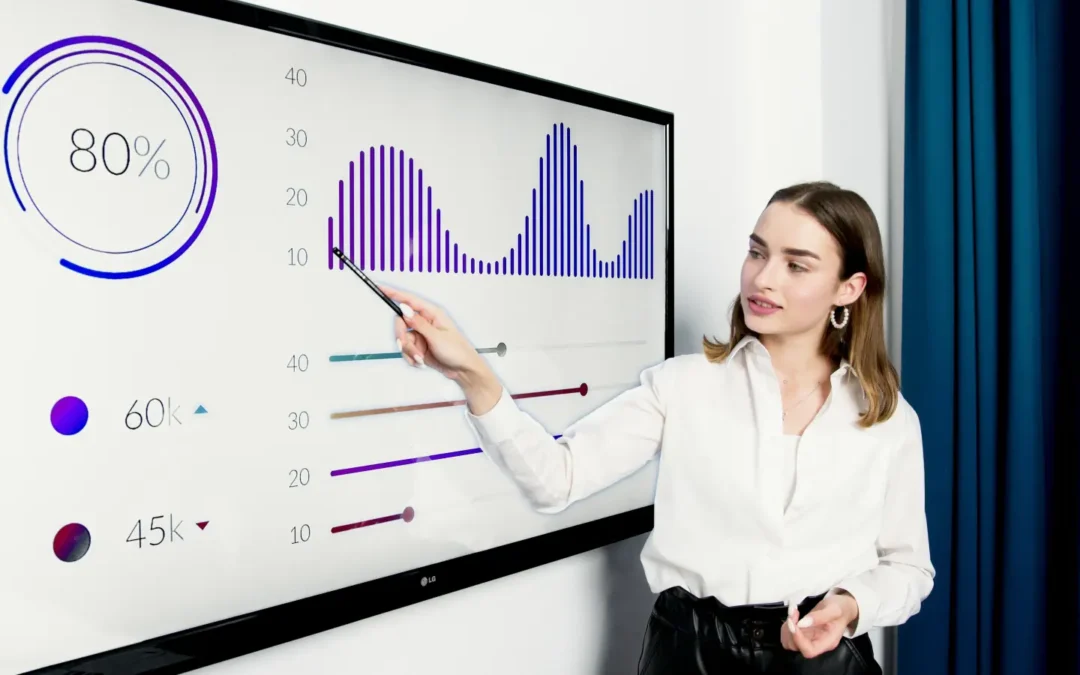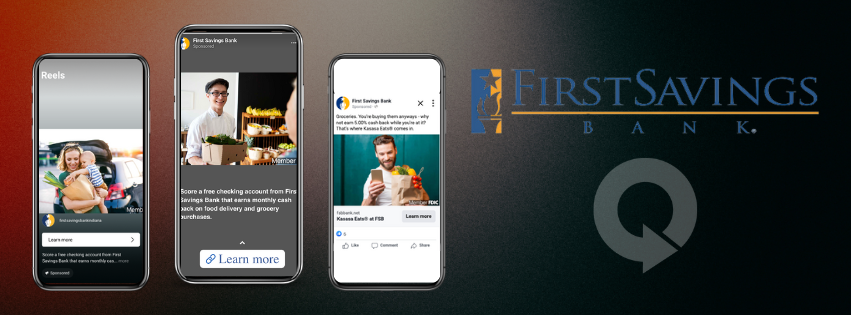
by threshold | Feb 10, 2025 | All, Culture, Digital Marketing, General, Marketing, Tech/Web
 Ava Page-Arnold
Ava Page-Arnold
You can create the most valuable, engaging content in your industry, but if no one can find it, does it really matter? That’s where SEO (Search Engine Optimization) comes in. A strong SEO strategy ensures your content reaches the right audience at the right time, increasing visibility, engagement, and conversions.
Many businesses treat SEO and content marketing as separate strategies when, in reality, they should work together. SEO helps content get discovered, while great content improves SEO rankings. In 2025, search engines continue to prioritize high-quality, user-focused content. That means a well-rounded SEO approach is no longer optional—it’s essential for long-term digital marketing success.
SEO helps your content get discovered.
One of the biggest challenges businesses face is producing content that never gains traction. Without SEO, even the most insightful blog post can get buried in search results, making it nearly impossible for potential customers to find. Search engines rely on factors like keyword relevance, content structure, and internal linking to determine rankings. If your content isn’t optimized, it simply won’t reach its intended audience.
To improve discoverability, businesses should invest in keyword research before creating content. Tools like Google Keyword Planner, SEMrush, and Ahrefs can help identify the terms and phrases potential customers are searching for. Incorporating these keywords naturally into titles, headings, and body copy increases the chances of ranking higher on search engine results pages (SERPs). Additionally, structuring content with clear headings, meta descriptions, and internal links can improve visibility and enhance user experience.
For example, instead of writing a broad blog post titled “How to Improve Your Website,” optimizing it for a high-intent search term like “10 Ways to Improve Website Performance in 2025” will attract a more targeted audience actively looking for solutions.
SEO enhances user experience and engagement.
Ranking high in search results is only part of the equation. Once users land on your website, their experience determines whether they stay, engage, and convert – or bounce immediately. Google factors user experience (UX) into its ranking algorithm, meaning slow, cluttered, or confusing websites are less likely to perform well in search results.
To keep visitors engaged, content should be formatted for easy readability. Short paragraphs, clear subheadings, and bullet points make information digestible, especially for mobile users. Since over 58% of global web traffic now comes from mobile devices, ensuring mobile-friendly design is crucial. A fast-loading site is equally important—pages should load in under two seconds to minimize bounce rates and improve rankings.
Beyond technical optimizations, content should also align with user intent. If someone searches for “Best SEO Strategies for Small Businesses,” they expect clear, actionable insights—not a sales pitch. Providing valuable, informative content that answers real questions builds trust and encourages visitors to explore your website further.
SEO and content build long-term authority.
Establishing authority in your industry takes time, but content marketing combined with SEO can accelerate the process. Google prioritizes high-quality, in-depth content that provides real value to users. That means businesses that consistently publish well-researched, informative content are more likely to rank higher than those pushing out low-quality or promotional material.
One of the best ways to build authority is through long-form content. Studies show that articles exceeding 2,000 words tend to rank higher because they provide comprehensive information on a topic. However, length alone isn’t enough—content must be well-structured, engaging, and supplemented with credible sources.
Another key factor in establishing authority is backlinking. When reputable websites link to your content, it signals to search engines that your site is a trusted source of information. Businesses can improve their backlink strategy by guest posting on industry blogs, producing original research, or creating shareable content like infographics and case studies.
Updating old content is another often-overlooked tactic. Google favors fresh content, so revisiting older blog posts and refreshing them with new statistics, updated insights, and additional internal links can improve rankings and maintain relevance.
SEO helps convert traffic into leads.
Driving traffic to your website is important, but without a clear conversion strategy, those visitors won’t turn into leads or customers. SEO isn’t just about bringing people to your site—it’s about guiding them toward a specific action, whether it’s signing up for a newsletter, downloading a resource, or making a purchase.
A well-optimized content strategy includes strong Calls-to-Action (CTAs) that encourage visitors to take the next step. For example, a blog titled “Best Marketing Strategies for 2025” could include a CTA offering a free downloadable marketing checklist in exchange for an email address. This approach not only provides value to the reader but also helps businesses generate leads.
Another important aspect of conversion-driven SEO is optimizing content for featured snippets. These are the answer boxes that appear at the top of Google search results, often displaying concise responses to user queries. Structuring content with clear headings, numbered lists, and concise answers increases the chances of earning a featured snippet, which can significantly boost click-through rates.
the role of local SEO in content strategy.
For businesses with physical locations or those serving specific geographic areas, local SEO plays a crucial role in content visibility. Nearly 46% of all Google searches are local, meaning businesses that fail to optimize for location-based searches miss out on potential customers.
Optimizing a Google Business Profile is one of the most effective ways to improve local search visibility. Keeping business hours, contact information, and customer reviews up to date increases credibility and helps businesses appear in Google’s Local Pack.
Location-based content is another valuable strategy. Blog posts that target region-specific keywords – such as “Best Mortgage Lenders in Austin” instead of “Best Mortgage Lenders” – help businesses rank higher for relevant local searches. Publishing content tailored to specific communities or industries can also attract a more engaged audience.
AI and voice search optimization are changing SEO.
The rise of AI-powered search and voice assistants like Siri, Alexa, and Google Assistant is changing how people find content. By 2025, nearly 50% of searches are expected to be voice-based, meaning businesses must optimize their content for conversational queries.
Traditional keyword strategies often focus on short, static phrases, but voice search queries tend to be longer and more natural. Instead of optimizing for “SEO tips,” businesses should target “What are the best SEO tips for beginners?” to better align with how people speak.
Structured data markup is another way to optimize for AI search. This coding technique helps search engines better understand website content, increasing the chances of appearing in rich results like knowledge panels and featured snippets.
to wrap things up.
SEO and content marketing aren’t separate strategies—they are two sides of the same coin. Without SEO, content remains undiscovered. Without high-quality content, SEO efforts fall flat. Integrating SEO best practices into your content strategy ensures that your website not only ranks higher but also provides meaningful, valuable experiences for users.
By prioritizing keyword research, optimizing for user experience, and creating authoritative content, businesses can attract the right audience, build long-term credibility, and drive real business results.
Want to ensure your content strategy is SEO-optimized for 2025? Let Threshold help you create a roadmap for success – schedule a consultation to craft a strategy tailored to your business today.

by threshold | Feb 1, 2025 | All, Culture, Digital Marketing, General, Marketing
 Ava Page-Arnold
Ava Page-Arnold
avoid these common content pitfalls & build a strategy that works.
Content marketing is one of the most powerful tools in digital strategy, but simply creating content isn’t enough – it needs to be strategic, consistent, and optimized for results. Many businesses invest in content marketing yet fail to see real returns because they unknowingly fall into common content strategy traps.
If your content isn’t driving traffic, engagement, or conversions, don’t worry – you’re not alone. Here are the top five content strategy mistakes businesses make (and how to fix them in 2025).
inconsistent messaging across platforms.
Your website says one thing, your social media posts say another, and your emails sound completely different. This inconsistency confuses your audience and weakens your brand identity.
the fix
- Develop brand voice guidelines to ensure a consistent tone, style, and messaging across all platforms.
- Align your website, blogs, emails, and social content to tell a cohesive story about your brand.
- Ensure visual consistency by using the same logos, fonts, and color schemes throughout your content.
Example: A brand with a fun and casual tone shouldn’t have dry, corporate-sounding website copy. Keep your brand voice uniform, whether you’re posting on LinkedIn or sending a promotional email.
ignoring keyword research & SEO.
Many businesses write content without considering SEO, which means they’re not targeting the right audience or ranking in search engines. Without keyword research, your content may never reach the people searching for it.
the fix
- Use SEO tools like Google Keyword Planner, SEMrush, or Ahrefs to identify high-ranking, relevant keywords.
- Focus on long-tail keywords that match user intent (e.g., “best social media strategy for small businesses” instead of just “social media strategy”).
- Naturally incorporate keywords into titles, meta descriptions, headers, and body content to improve search visibility.
Example: If you’re a marketing agency, writing about “content marketing strategies” is too broad. Instead, target “content marketing strategies for real estate” to capture a more specific audience.
creating content without a clear goal.
Many businesses produce blogs, social media posts, and videos just for the sake of posting without a clear goal. Without purpose, your content lacks direction and measurable success.
the fix
- Set a clear objective for every piece of content: Is it meant to educate, generate leads, or convert?
- Use analytics to track key performance indicators (KPIs) like traffic, engagement, and conversions.
- Align your content strategy with the buyer’s journey, ensuring you have content for awareness, consideration, and decision-making stages.
Example: A blog post should be optimized for SEO and drive organic traffic, while an email campaign should nurture leads toward a purchase.
not repurposing & maximizing content.
Many businesses publish content once and forget about it instead of repurposing it across multiple platforms for maximum reach.
the fix
Turn a single blog post into:
- A LinkedIn article
- A Twitter thread
- A short-form video for Instagram Reels or TikTok
- A lead magnet in an email campaign
- Refresh and update older content with new data, keywords, and insights instead of creating everything from scratch.
Example: If you publish a blog about “Top Marketing Trends for 2025,” create an infographic summarizing key takeaways and share it across LinkedIn, Instagram, and Pinterest.
forgetting to optimize for user experience (UX).
A great piece of content won’t perform well if it’s hard to read, poorly structured, or slow to load.
the fix
- Use short paragraphs, headers, bullet points, and bold text to improve readability.
- Optimize images and compress files to improve site speed (Google prioritizes fast-loading pages).
- Ensure content is mobile-friendly, as over 58% of web traffic comes from mobile users.
Example: If your blog is a wall of text, visitors will bounce quickly. Break up content with engaging subheadings, graphics, and clear CTAs (Calls-to-Action).
to wrap things up.
Content marketing isn’t just about producing content – it’s about producing the right content with a clear strategy.
By fixing these five common mistakes, you can create consistent, engaging, and SEO-friendly content that drives real business results.

by threshold | Jan 18, 2025 | Digital Marketing, General, Marketing
 Ava Page-Arnold
Ava Page-Arnold
make 2025 your best marketing year yet.
The start of a new year is the perfect time to take your digital marketing strategy to the next level. Resolutions aren’t just for personal growth – they’re essential for your business too. The best part? They don’t have to be overwhelming.
To help you stay ahead of the game in 2025, we’ve outlined five marketing resolutions that are practical, impactful, and designed to deliver real results in today’s digital marketing space.
prioritize personalization.
Personalization isn’t just something nice to offer as a bonus. In today’s landscape, it’s expected. Research shows that 80% of customers are more likely to purchase from a brand that offers tailored experiences. Personalized marketing builds trust, loyalty, and stronger connections with your audience.
how to do it:
- Use email marketing platforms with automation capabilities to deliver personalized content.
- Incorporate dynamic website content, such as product recommendations based on user behavior.
- Segment your audience into smaller, more specific groups for targeted messaging.
refresh your seo strategy.
SEO is a long game, but the rules change constantly. Updating your SEO strategy ensures you’re ranking for the right keywords and meeting the latest search engine guidelines.
quick wins:
- Audit your keyword list to target long-tail phrases that match user intent.
- Optimize your meta descriptions and title tags to boost click-through rates.
- Add internal links to connect related content and improve navigation.
double down on analytics.
Your data tells a story – if you know how to read it. Analytics help you identify what’s working, what’s not, and where to allocate your resources for maximum impact.
how to do it:
- Use GA4 (Google Analytics) to track user behavior, conversions, and engagement.
- Set measurable KPIs for campaigns, such as cost per lead (CPL) or click-through rate (CTR).
- Regularly review data to spot trends and make informed decisions.
example: If a campaign is generating high traffic but low conversions, analyze the user journey to find drop-off points and adjust accordingly.
embrace video marketing.
Video content will make up 82% of internet traffic in 2025. It’s engaging, shareable, and perfect for communicating complex ideas in a digestible way.
ideas to try:
- Create product demos or tutorials to showcase your offerings.
- Post behind-the-scenes videos to humanize your brand.
- Use platforms like TikTok, Instagram Reels, or YouTube Shorts for short-form video content.
optimize your website.
Your website is your digital hub. A well-optimized site can improve user experience, boost conversions, and strengthen your overall brand presence.
key focus areas:
- Reduce page load times to keep visitors engaged.
- Ensure mobile responsiveness to cater to on-the-go users.
- Update content to reflect your 2025 messaging and goals.
set your goals today.
Resolutions without a plan are just dreams. Let Threshold help you create a roadmap for success – schedule a consultation to craft a strategy tailored to your business today.
Let’s make 2025 your best year yet!

by threshold | Jan 8, 2025 | All, Culture, Digital Marketing, General, Marketing, Tech/Web
 Ava Page-Arnold
Ava Page-Arnold
start the year strong with a website health check.
Your website is the heart of your digital strategy. It’s your virtual handshake, storefront, and lead generator all rolled into one. But if it’s slow, hard to navigate, or packed with outdated content, it could be costing you conversions, search rankings, and customer trust.
With 2025 in full swing, it’s the perfect time for a website audit. Don’t worry – it’s easier than you think. A little effort now can go a long way in making your website a high-performing powerhouse all year long.
test your page load times.
Studies show that 40% of visitors will abandon a site if it takes more than 3 seconds to load. Slow pages hurt your user experience, search rankings, and bottom line.
Use tools like Google PageSpeed Insights or GTmetrix to measure load times and identify problem areas. Common culprits include:
- Oversized image files
- Too many plugins or widgets
- Outdated hosting
Pro Tip: Compress images and upgrade your hosting plan if needed to handle increased traffic.
check for mobile-friendliness.
With 58.43% of global web traffic coming from mobile devices, a mobile-friendly design is non-negotiable. Google also prioritizes mobile-first indexing, meaning mobile usability affects your search rankings.
Use Google’s Mobile-Friendly Test to see how your site performs on different devices.
Focus on:
- Ensuring buttons and links are easy to tap.
- Optimizing font sizes for smaller screens.
- Avoiding intrusive pop-ups that block content.
update your content.
Content that’s outdated or irrelevant can damage your credibility and hurt SEO rankings. Fresh content keeps visitors engaged and helps you rank for current keywords.
One way to start the healing process is to conduct a content audit. Look for:
- Blog posts or pages with outdated statistics or references.
- Broken links or missing images.
- Opportunities to optimize older content for new keywords.
Pro Tip: Revamped blog posts can increase traffic by up to 30% without creating entirely new content.
test navigation for usability.
Visitors should be able to find what they need in three clicks or fewer. Clunky menus or confusing layouts will have them hitting the back button fast.
Use heatmaps and analytics tools to see how visitors interact with your navigation. Simplify menus, add breadcrumbs, and ensure CTAs are visible and clear.
example: If your navigation includes redundant or overly detailed submenus, consolidate them into broader categories.
secure your site.
Security breaches can cost you more than just trust. They can also lead to fines, downtime, and lost business. Plus, Google flags sites without HTTPS as “not secure,” which can deter visitors.
what you can do:
- Verify your SSL certificate is active.
- Update plugins and CMS software regularly.
- Implement strong password policies for admin accounts.
ready to optimize?
Your website deserves to be your greatest asset, not your biggest stressor. A quick audit now will set you up for success all year long.
Let us do the heavy lifting with a free consultation.

by threshold | Nov 26, 2024 | Digital Marketing, General, Marketing, Thought Leadership
 Taylor Dickmann
Taylor Dickmann
In 2024, local SEO is no longer just an option for real estate businesses—it’s essential. With the growing importance of online search in the real estate industry, competition for visibility is fiercer than ever. Potential renters and buyers are using search engines to find properties near them, making local SEO a powerful tool for ensuring your listings appear in the right searches. To stay competitive and round out their digital presence, real estate businesses must master local SEO strategies to improve their rankings, attract qualified leads, and drive more traffic.
the importance of local SEO for real estate businesses.
Local SEO focuses on optimizing your business’s online presence to appear in geographically related searches. For real estate, this is crucial, as prospective tenants or buyers are almost always searching for properties in specific areas. Local SEO helps real estate agencies, apartment complexes, and property managers stand out in search results, particularly on Google, which dominates the market for search.
In 2024, where virtual tours, online leasing, and mobile search have become the norm, the competition to rank highly in local searches has intensified. Appearing in Google’s coveted “Local Pack” (the top three local results that appear with a map) can drastically increase visibility and bring more qualified traffic to your website or property listings. A well-optimized local SEO strategy can make sure your business is found by the right people at the right time, driving both leads and conversions.
optimizing google business profile.
One of the most powerful tools in local SEO is the Google Business Profile (GBP). GBP helps businesses manage their presence across Google Search and Google Maps, providing essential information to prospective renters right in the search results.
tips for optimizing your google business profile:
- Complete All Information: Ensure your GBP is fully filled out with accurate details. Include your business hours, address, phone number, and website. Be sure to add up-to-date photos of your properties to make a strong first impression.
- Use Keywords in Descriptions: Optimize your profile description with location-specific keywords, such as “luxury apartments in [city]” or “student housing near [university].” This helps your business show up in relevant local searches.
- Encourage and Manage Reviews: Google reviews significantly impact local rankings and consumer trust. Encourage satisfied tenants or buyers to leave positive reviews and respond professionally to any feedback, whether it’s good or bad. Engaging with reviews shows you are active and care about your customers.
localized content and keywords.
Creating localized content is key to improving your local SEO. This involves developing content that speaks directly to the needs and interests of your target audience in specific locations. For real estate, this could mean creating neighborhood guides, blogs about local amenities, or highlighting events in the area.
tips for localized content:
- Location-Specific Pages: If you manage properties in multiple areas, create individual landing pages for each location. These pages should be optimized with local keywords and include information relevant to that specific area.
- Localized Blog Content: Writing about local events, neighborhood highlights, and property-related topics with local keywords can further boost your visibility in search results.
mobile optimization & voice search.
With the rise of mobile-first indexing, Google now prioritizes websites that are optimized for mobile devices. For real estate businesses, where many users browse listings on their smartphones, ensuring your website is mobile-friendly is crucial for both user experience and SEO.
mobile optimization best practices:
- Ensure Website Responsiveness: Your site should automatically adjust to fit different screen sizes. This ensures users have a seamless experience, whether they’re viewing your site on a phone, tablet, or desktop.
- Improve Page Speed: Slow-loading websites can hurt both your user experience and your SEO rankings. Use tools like Google PageSpeed Insights to identify ways to speed up your site.
- Optimize for Voice Search: With the increasing use of voice-activated assistants like Siri and Google Assistant, optimizing for voice search can give you a competitive edge. Voice search queries tend to be longer and more conversational, so make sure your content addresses common questions like “What’s the best neighborhood for families in [city]?” or “Affordable apartments near [landmark].”
to wrap things up.
Mastering local SEO is critical for real estate businesses looking to increase visibility and attract more local leads in 2024. By optimizing your Google Business Profile, creating localized content, building local backlinks, and ensuring your site is mobile-friendly, you can improve your search rankings and stay ahead of the competition. With the right strategies in place, local SEO can drive more traffic to your site, generate high-quality leads, and ultimately help you close more deals.
how Threshold can help with local SEO.
At our agency, we specialize in local SEO strategies tailored specifically for the real estate industry. We offer comprehensive Google Business Profile (GBP) management, ensuring your profile is fully optimized with accurate information, engaging photos, and location-specific keywords. Our team also manages daily GBP posts, keeping your profile active and relevant.
Additionally, if you partner with us on your website, we ensure responsiveness and fast page speed, as well as other technical SEO tactics that play a role in local rankings. Our expertise in mobile optimization and technical SEO ensures your website performs well on all devices, helping you stay competitive in today’s mobile-first world.
Let us help you master local SEO and drive growth in 2024.

by threshold | Nov 6, 2024 | Digital Marketing, Financial Marketing, General, Marketing
When First Savings Bank wanted to go beyond “good enough” with their marketing efforts, they turned to us. Known for offering stellar personal and business accounts, they needed a boost to differentiate themselves in a crowded market.
Our goal? To help them open 463 new accounts and achieve a 20% lift in customer acquisition. Spoiler alert: we did that – and so much more.
the challenge: standing out in a saturated market.
First Savings Bank had been doing well, but that wasn’t enough for their standards. In a financial world where competition is fierce, they struggled to make their brand stand out. Their existing marketing was solid but lacked the punch needed to reach the next level of growth.
That’s where we stepped in.
We saw an opportunity to elevate their strategy with bold, high-performance ads that would resonate with their target audience. We carefully considered their customers’ geographic locations, buying patterns, and lifecycle stage to craft a strategy that would grab attention and convert leads into customers.
the big dream: building a marketing funnel that crushes it.
First Savings Bank had clear goals: open 463 new accounts and achieve a 20% increase in customer acquisition. But we didn’t just want to meet those goals; we aimed to exceed them.
the strategy: focusing on what makes first savings bank special.
To kick things off, we honed in on First Savings Bank’s unique products, including Kasasa Cash Back, Kasasa Cash, and Kasasa Eats. Keep in mind, these weren’t your run-of-the-mill banking products – they were different, and we knew that was our ticket to success.
We opted for an omni-channel marketing strategy, casting a wide net to capture more leads across multiple platforms, from Google Search to Facebook, Instagram, and programmatic digital display platforms. Our ads were tailored to speak the language of First Savings Bank’s ideal customers and highlight what set the bank apart.
phase one: research, research, research.
Before launching, we dove deep into research. We explored the target audience, analyzed the competition, and fine-tuned the messaging to ensure it hit home. The goal was simple: make sure every word and image spoke directly to the people who’d care the most about First Savings Bank’s offerings.
phase two: launching across multiple channels.
With our research in hand, we rolled out campaigns across Google Search, Instagram, Facebook, and programmatic display ads. The results? They far surpassed the goals.
the results: more than just impressions.
Here’s how things shook out by April 1st, 2024:
- Total Impressions: 10,066,287
- Total Clicks: 54,444
- Paid Search: 69,186 impressions, 11,721 clicks (CTR: 16.94%)
- Facebook & Instagram: 7,858,678 impressions, 39,627 clicks (CTR: 0.50%)
- Programmatic Display: 2,138,423 impressions, 3,096 clicks (CTR: 0.14%)
And those account numbers? We exceeded the original goal of 463 new accounts, closing with 638 new accounts by April 1st, 2024. That’s a 27.5% lift in customer acquisition, well above the projected 20%.
The high click-through rates (CTR) on paid search campaigns showed us that our ads were not only seen but genuinely resonated with the audience. And when you combine that with strong engagement across social platforms like Facebook and Instagram, it’s clear the strategy worked.
why it worked.
By zeroing in on First Savings Bank’s strengths, we were able to create ads that didn’t just attract attention but actually convinced people to open accounts. Kasasa Cash Back, Kasasa Cash, and Kasasa Eats are unique products, and by showcasing them in a way that felt personal and relatable, we helped drive real results.
to wrap things up.
At the end of the day, our partnership with First Savings Bank was a major success. Not only did we help them hit their goals, but we also positioned them for continued growth in a tough market. By leveraging their unique product offerings and engaging the right audience at the right time, we helped them exceed expectations and stand out from the competition.
Want results like this? Let’s chat.

 Ava Page-Arnold
Ava Page-Arnold




 Taylor Dickmann
Taylor Dickmann